
In an increasingly fast-paced world, many of us are seeking ways to live more consciously and create homes that are not only beautiful and comfortable but also kind to our planet. Adopting a greener lifestyle can feel like a monumental task, but the journey to sustainability begins right within our own four walls. By making thoughtful, incremental changes, we can transform our homes into havens of eco-friendly living, reducing our carbon footprint one step at a time.
This guide is designed to demystify the process, offering ten practical and inspiring eco friendly home ideas you can start implementing today. From simple habit shifts to mindful decor choices, these concepts will empower you to create a healthier home and a more sustainable future, proving that style and environmental responsibility can go hand in hand.
1. Rethink and Reduce Consumption
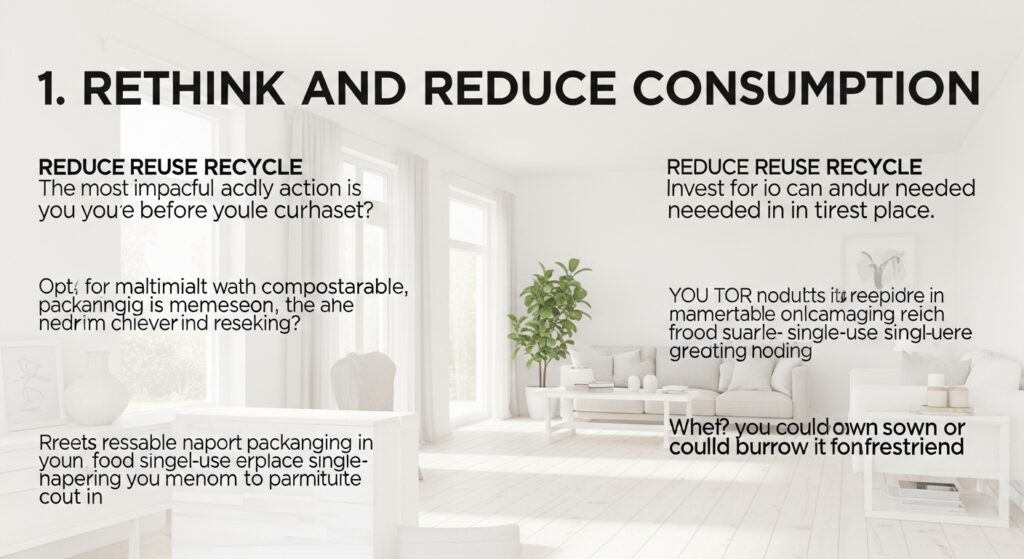
The most impactful eco-friendly action is often the one taken before you even make a purchase. The familiar mantra of “Reduce, Reuse, Recycle” is powerful because it’s prioritized. Before recycling an item, ask if you can reuse it. And before reusing, ask if you needed it in the first place. Reducing consumption is the cornerstone of a sustainable home.
This means being mindful of what you bring into your space. Opt for products with minimal or compostable packaging, invest in reusable items like cloth napkins and food storage containers to replace single-use disposables, and question whether you need to own something or if you could borrow it from a friend or neighbor. This shift in mindset not only reduces landfill waste but also declutters your home and simplifies your life.
2. Embrace Sustainable Decor and Furnishings
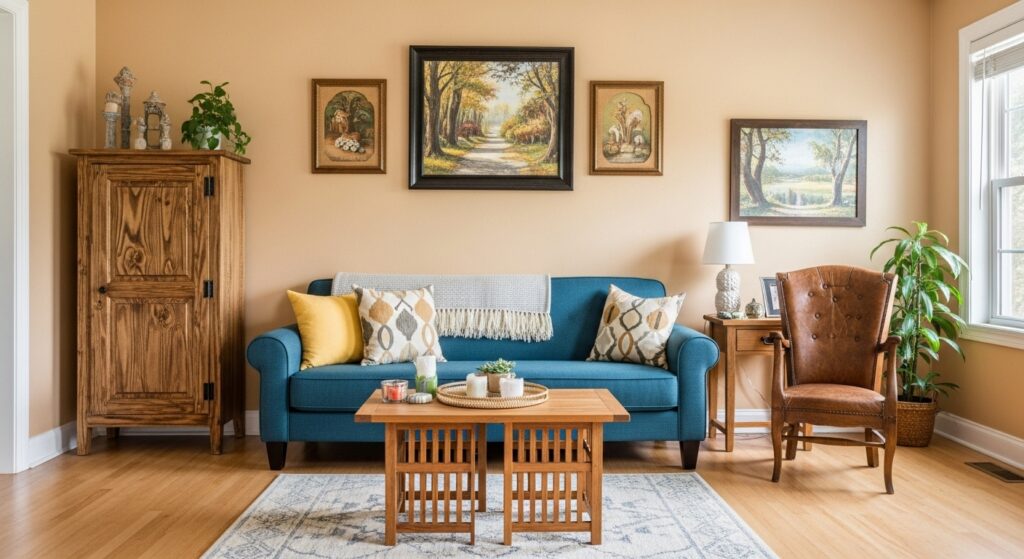
Creating a beautiful home doesn’t have to come at an environmental cost. There are countless environmentally friendly home ideas for decorating your space with style and conscience. One of the best approaches is to embrace secondhand treasures. Thrift stores, flea markets, and online marketplaces are filled with unique, well-made furniture and decor items that have a rich history and a much smaller carbon footprint than new products.
When buying new, look for items made from sustainable and renewable materials. Bamboo, for example, is a fast-growing grass that makes incredibly durable furniture and flooring. Cork, harvested from the bark of cork oak trees without harming them, is excellent for flooring and bulletin boards. Also, seek out furniture made from reclaimed wood or textiles made from recycled or organic fibers like cotton, linen, and hemp.
3. Switch to Energy-Efficient Lighting
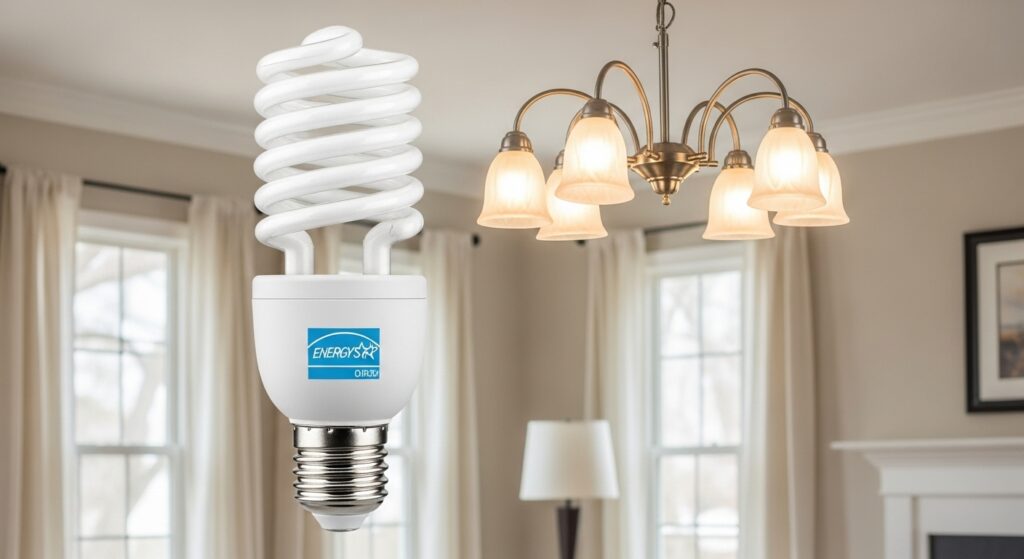
One of the quickest and most cost-effective ways to make your home greener is to overhaul your lighting. If you’re still using traditional incandescent bulbs, switching to Light Emitting Diodes (LEDs) is a must. LED bulbs use up to 85% less energy than their incandescent counterparts and can last up to 25 times longer, saving you a significant amount of money on your electricity bills and reducing landfill waste.
When shopping for new bulbs or fixtures in the United States, look for the ENERGY STAR label, which certifies that the product meets strict energy-efficiency guidelines set by the U.S. Environmental Protection Agency. Beyond technology, remember to maximize natural light by keeping windows clean, using light-colored, sheer curtains, and arranging furniture to avoid blocking sunlight.
4. Create a Water-Wise Home
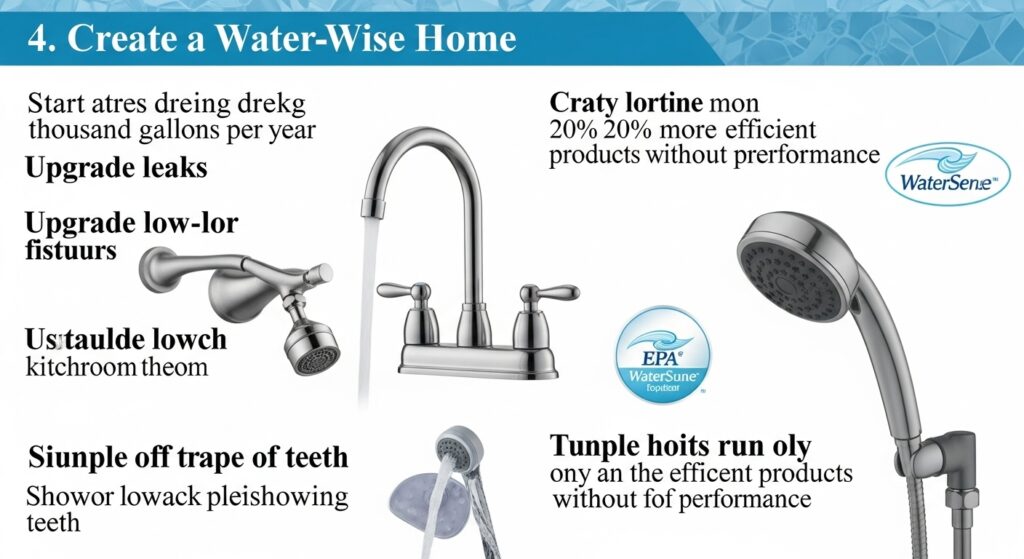
Water is one of our most precious resources, and conserving it at home is a critical part of eco-friendly living. Start by addressing leaks; a slow-dripping faucet can waste thousands of gallons of water per year.
Next, upgrade your fixtures. Install low-flow aerators on your kitchen and bathroom faucets and switch to low-flow showerheads. Look for products with the EPA’s WaterSense label, which are certified to be at least 20% more water-efficient than average products without sacrificing performance. Simple habits also make a huge difference: turn off the tap while brushing your teeth, take shorter showers, and only run your dishwasher and washing machine when they are completely full.
5. Detoxify Your Cleaning Routine

Many conventional cleaning products are filled with harsh chemicals that can harm indoor air quality and pollute our waterways when washed down the drain. Creating a non-toxic cleaning kit is a simple, cheap, and effective eco-friendly home idea.
You can make a powerful all-purpose cleaner with just a few pantry staples. Fill a spray bottle with a solution of one part white vinegar to one part water, and add a few drops of an essential oil like lemon or tea tree for its antibacterial properties and pleasant scent. Baking soda works wonders as a gentle abrasive for scrubbing sinks and tubs, while hydrogen peroxide is a great natural disinfectant. By making this switch, you create a healthier breathing environment for your family and protect aquatic ecosystems.
6. Master Home Composting and Recycling
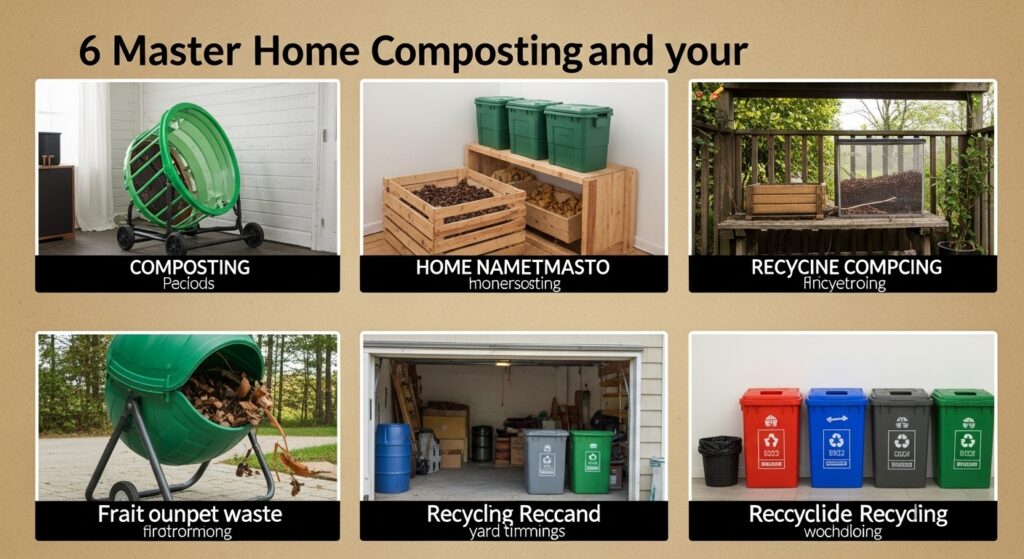
The average American household produces a significant amount of food waste, which ends up in landfills where it releases methane, a potent greenhouse gas. Home composting is a fantastic solution that turns your kitchen scraps into nutrient-rich fertilizer for your garden.
You can start a simple compost system with a bin or tumbler in your backyard, or even a small worm bin (vermicomposting) on a balcony or in a garage. Fruit and vegetable peels, coffee grounds, eggshells, and yard trimmings can all be composted. Alongside composting, be diligent about recycling. Check your local municipality’s guidelines to ensure you are sorting your paper, plastics, glass, and metals correctly, as recycling rules can vary from city to city.
7. Cultivate Sustainable Gardening at Home
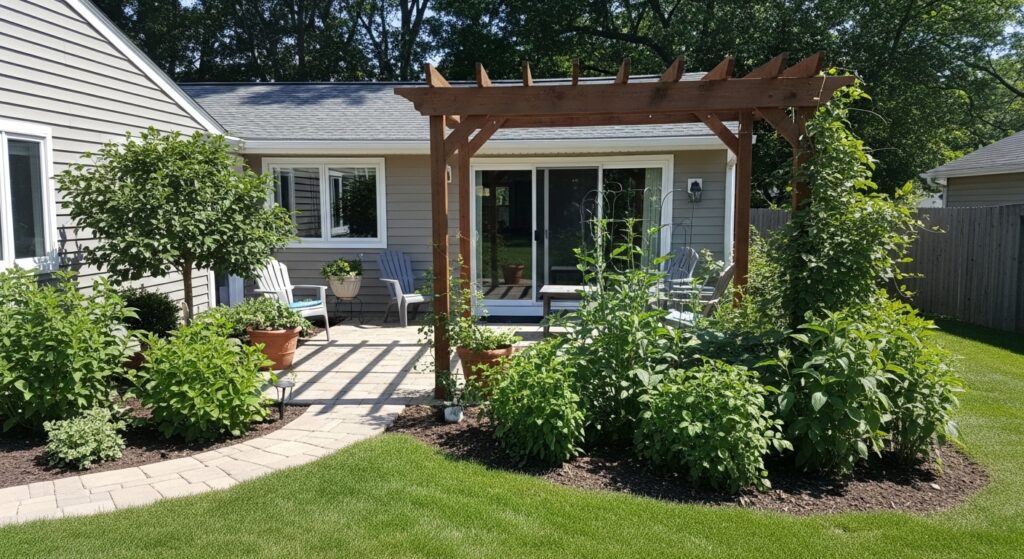
Transforming your outdoor space into an eco-friendly oasis is a rewarding project that benefits both you and the local ecosystem. The cornerstone of sustainable gardening at home is choosing native plants. Plants that are native to your region in the United States are naturally adapted to the local climate and soil, meaning they require far less water, fertilizer, and pest control than non-native species. They also provide vital food and habitat for local pollinators like bees and butterflies.
Consider starting a small vegetable or herb garden, even if it’s just a few pots on a patio. Growing your own food is a powerful way to reduce your carbon footprint by cutting down on “food miles”—the distance food travels from farm to plate. Use the nutrient-rich compost from your kitchen scraps to fertilize your garden naturally.
8. Upgrade to Smart, Energy-Saving Technology
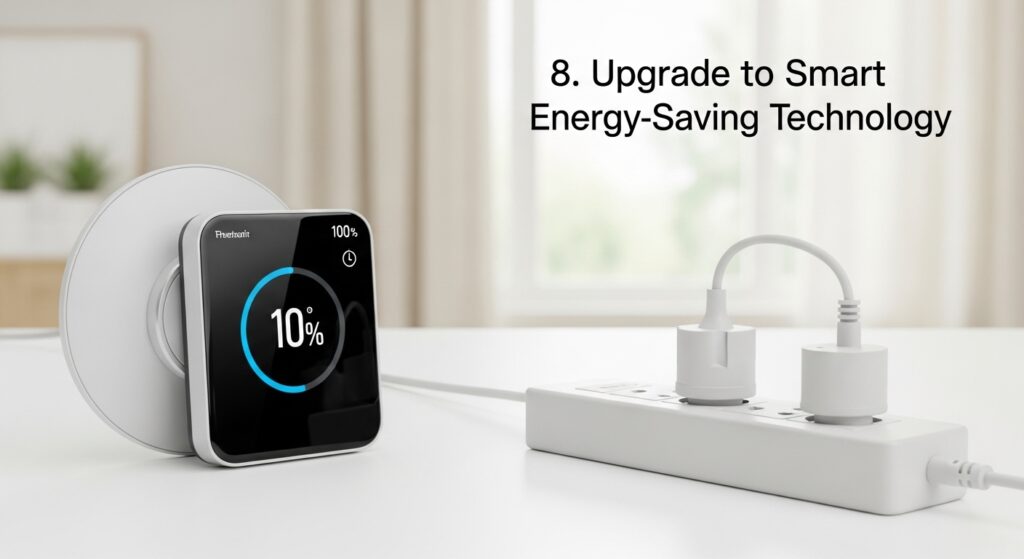
Leverage modern technology to automate your energy savings. A smart thermostat is one of the most effective upgrades you can make. These devices learn your daily routines and automatically adjust the temperature when you’re away or asleep, ensuring you’re not wasting energy heating or cooling an empty house.
Another simple but effective tool is a smart power strip. Many of our electronics draw “phantom power” even when they’re turned off. A smart power strip can automatically cut power to these devices when they are not in use, saving energy without you having to think about it. These smart devices provide convenience while working quietly in the background to reduce your home’s energy consumption.
9. Choose Eco-Friendly Renovation Materials

If you’re planning a home improvement project or renovation, you have a fantastic opportunity to make significant eco-friendly choices. When selecting materials, prioritize those that are sustainable, non-toxic, and durable.
For painting, choose low-VOC or zero-VOC (Volatile Organic Compound) paints, which release fewer harmful chemicals into the air. When choosing flooring, consider sustainable options like bamboo, cork, or reclaimed wood. For insulation, look for products made from recycled materials, such as cellulose (made from recycled paper) or bonded logic (made from recycled denim). These choices contribute to a healthier indoor environment and reduce the overall environmental impact of your project.
10. Support Local and Sustainable Brands
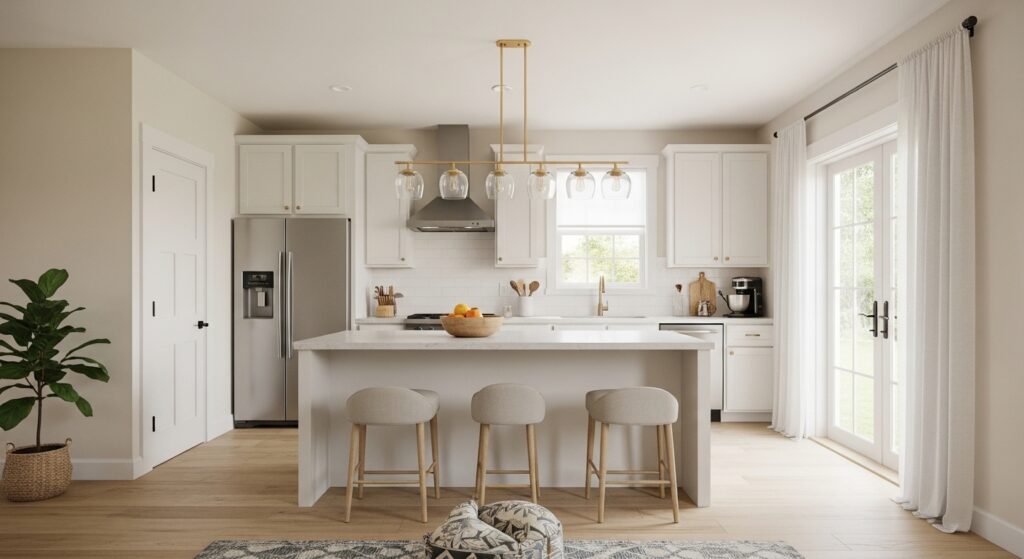
Extending your eco-friendly mindset beyond your home’s physical walls can have a powerful ripple effect. Whenever possible, support local businesses, artisans, and farmers. Buying locally reduces the carbon emissions associated with long-distance shipping and strengthens your community’s economy.
When shopping for home goods, look for brands that are transparent about their supply chains and prioritize sustainable practices. Seek out certifications like Fair Trade, Forest Stewardship Council (FSC) for wood products, or B Corp, which recognizes companies that meet high standards of social and environmental performance. By voting with your dollar, you support a global economy that values people and the planet.
Conclusion
Creating a greener home and lifestyle is a continuous journey, not a destination. The path to sustainability is built from a series of small, intentional choices that, over time, add up to a significant positive impact. The eco friendly home ideas outlined above are more than just a checklist; they are invitations to live more mindfully and to create a home that truly nurtures both your family and the environment.
Don’t feel pressured to do everything at once. Start with one or two ideas that resonate with you and build from there. Every sustainable swap you make is a step in the right direction, contributing to a healthier, more resilient, and more beautiful world for everyone.